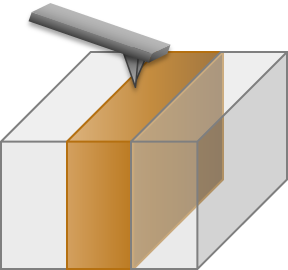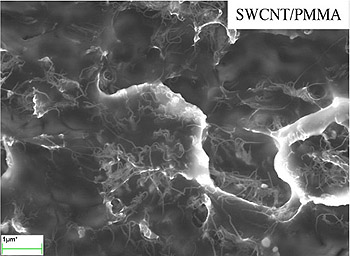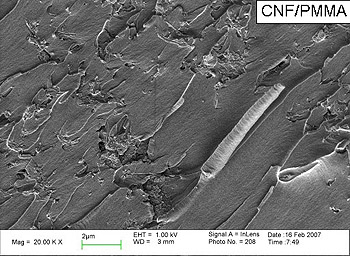Polymers

Polymers are used in many advanced applications due to their low cost, ease of processing, and tailorable properties by blending/mixing different polymers or combining a polymer matrix with fibrous or particulate inclusions to create composites. At the same time, the time, temperature, and environmental dependence of polymers makes understanding their long term properties and behavior challenging. In our work, we characterize the properties of polymers and composites by focused studies of thermal aging, time-temperature behavior, and associated modeling strategies from the nanoscale to the macroscale.
Nanostructured Polymers




Interfacial polymer regions near surfaces and substrates can have significantly altered properties relative to those of the corresponding bulk polymer. These polymer regions, extending up to hundreds of nanometers from interfaces, are known as the polymer interphase. Polymer nanocomposites based on spheroidal nanoparticles, nanoplatelets, nanotubes, etc. have received intense attention and research in recent decades, where the addition of small amounts of well-dispersed nanoparticles into polymer matrix materials has been shown to induce dramatic changes in the mechanical, thermal, electrical and diffusion properties of the host polymers, promising a novel class of polymer matrix composite materials with superior properties and added functionalities. Similarly, the performance of nanoscale polymer structures is often also dominated by the interphase. These new materials are ideal candidates in many applications, including aerospace, automobile manufacturing, medical devices, energy materials, and sporting goods. Our research has focused on the synthesis and characterization of nanostructured polymers, and the development of multiscale modeling techniques to understand their unique properties and facilitate material design. The centerpiece of our research on nanostructured polymers is to understand, and ultimately design, the interphase formed in the vicinity of nanoparticles inside polymer nanocomposites. Our research explores the formation mechanisms of this interphase region and its influence on the overall performance of the composites, aiming towards deeper understanding of processing-structure-property relationships.